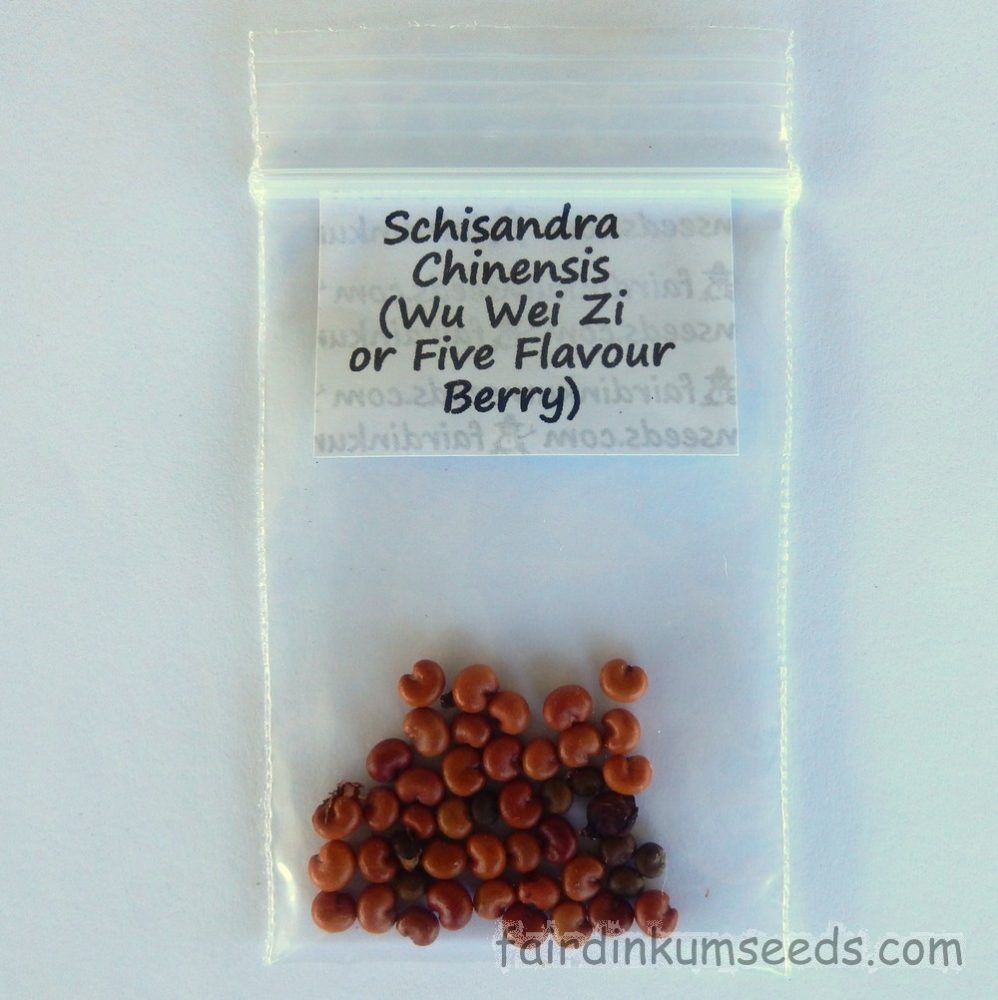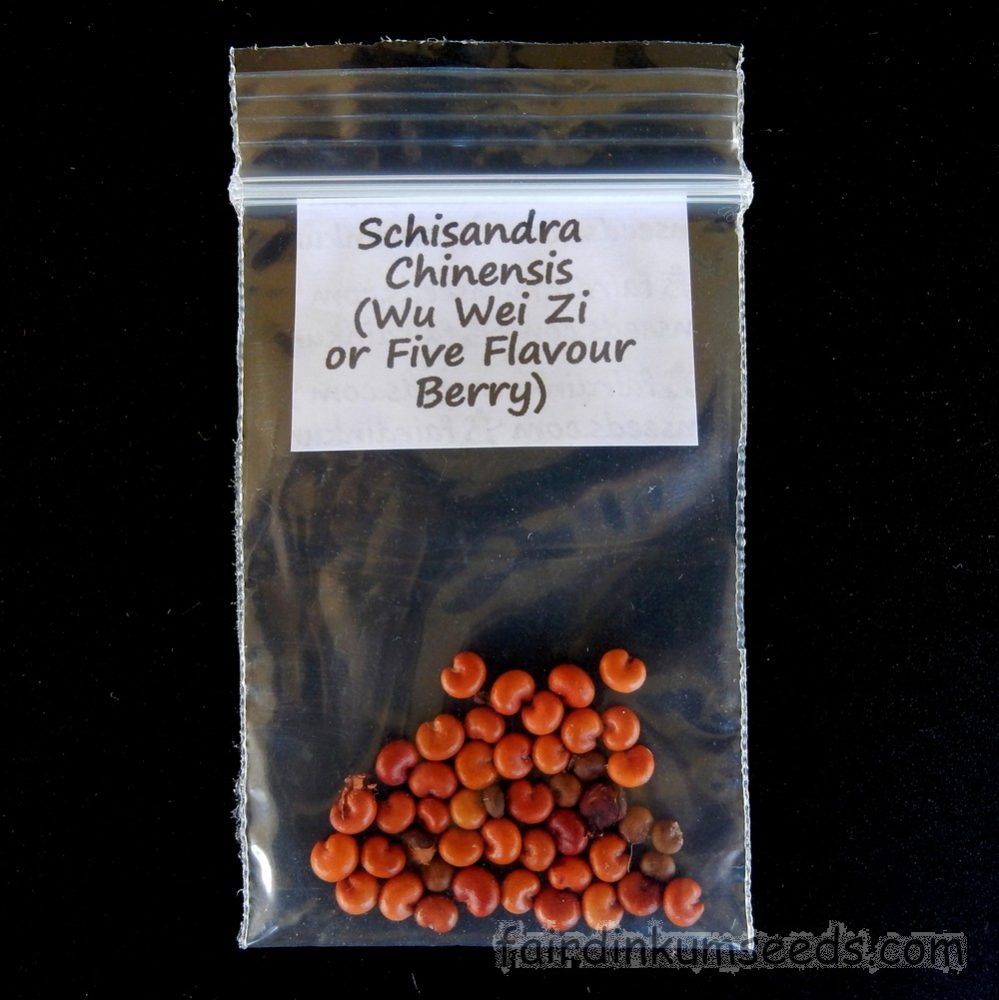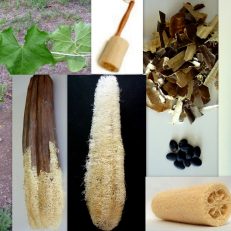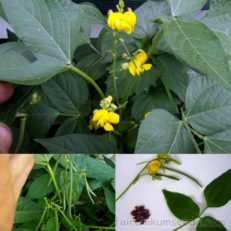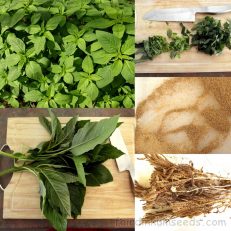Please read text!
Five Flavour Berry Wu Wei Zi Schisandra Chinensis Seeds
Packet of 20+ very rarely seen seeds!
This guy is a real beauty and I am very lucky to have finally gotten my hands of some freshly harvested seeds.
Five Flavour Fruit is the most common name that I have seen for this fella, but there are a lot of other ones too including Schisandra, wu-wei-zi, magnolia vine, chousengomishi, schizandra, gomishi, hoku-gomishi, kita-gomishi, wu wei zu, ji chu, hoy tsi, omiza, Maximowich’s red grape, Limonnik, Schisandra arisanensis, Schisandra sphenanthera, Schisandra rubriflora, Kansura chinensis, Sphaerostemma japonica, Sphaerostemma japonicum, Fructum Schizandrae, Maximoviczia amurensis, Wu wei zi, Schisandra japonica, Maximowiczia chinensis, Kadsura chinensis, and of course Schisandra chinensis.
The reason it is most commonly know as “Five Flavour Fruit”, is because it has all five defining flavours, Sweet, Sour, Bitter, Astringent, and Salty.
The salty and sour flavour are said to have stimulatory effects on the testicles and liver function, though I haven’t really noticed my testicles being stimulated while eating them?
Maybe I’m doing it wrong…
Heart and lung function is traditionally said to be improved by bitter and astringent flavoured herbs, and sweet flavoured herbs are of most benefit to the stomach and intestine.
It is classed an adaptogen and used as a restorative herb by most folks, a sort of general tonic that reduces stresses on the body and I personally find it a real pick me up.
I suck on a dried fruit when the coffee is wearing off or I am in for a big day of physical work, for me it has a very noticeable effect. More than a couple fruit does not increase this effect, so best to just have the odd fruit every now and then.
It has a recorded history of use in China dating more than 2,000 years, and is used extensively in Korea, Japan, Russia, pretty much its whole native range.
It is sold as a sundried fruit by herbal pharmacies in Asia, and also as a powder or as a ticture or alchohol based extract.
Drying or extraction does not seem to negatively effects it, unlike a lot of other medicinal plants. The fruit are very high in a complex blend of carboxylic, malic, citric, tartaric acids, up to 10% by weight, and this is the reason for the very intense flavour composition.
The seeds surprisingly contain no flavones, glycosides, or tannins, but they do have high amounts of alkaloids, and fatty esters.
Lignans are considered the most medicinally useful componant with up to 19% of the fruit made up of schizandrin, schizandrol, schizanderer, gomisins A, B, C, D, F, and G, tigloylgomisin, angeloylgomisina, deoxyschizandrin, and other closely related compounds.
In China it is used for the treatment of various mental illnesses including depression and insomnia, and its nervous system stimulatory effects are said to increases reflex responses, memory and improves general mental alertness.
When taken in the mornings it is used to sort of reset the body clock in cases of insomnia, the opposite of how sedative drugs are normally used in the West.
Also looks cool. It really does, beautiful flowers, big red fruit, soft glossy leaf.
Growing it is easy too.
I tried a few different things, the first being GA3 as I read it was really hard to grow.
500ppm soak gave me germination in about 3weeks, but just planting in soil putting it in the greenhouse gives me germination in about 6-9weeks and the seedlings are much healthier.
So yeah, just stick them in well draining dirt, keep nice and moist, should have no dramas.
Grown by a friend of ours(soon we should have our own seeds too)

